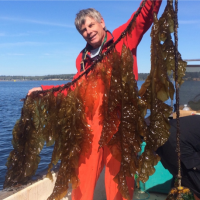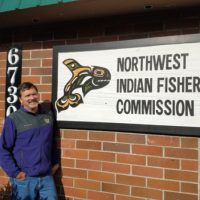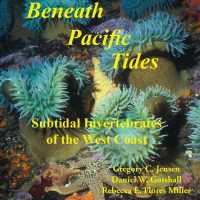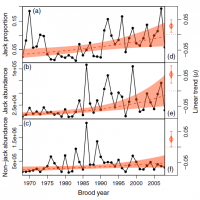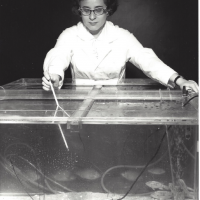Filter Results
Centennial Story 57: Jonathan (Joth) Davis (PhD, 1994)
SAFS has been a big part of my career working in shellfish and I treasure my time spent there, especially during the many years following my degree, collaborating with SAFS faculty and students. Having the pleasure of working with graduate students is a true joy in life, and I suppose I am most gratified just helping to expose them to the wonderful world of shellfish.
Read moreCentennial Story 56: Robert (Bob) Conrad (BS, 1978; MS, 1983)
Growing up in Ohio next to a river, I developed an interest in fish at an early age, and—thanks to television, National Geographic, and Jacques Cousteau—a fascination with the ocean.
Read moreGreg Jensen Releases New Book: Beneath Pacific Tides
This winter, Greg Jensen is releasing his follow-up book, Beneath Pacific Tides: Subtidal Invertebrates of the West Coast. Like the charismatic crustaceans featured in his debut publication, the colorful and bizarre invertebrates found along the Pacific Coast are explored in this new user-friendly guide, featuring Jensen’s underwater photography.
Read moreAn explanation for suddenly elevated numbers of small “sneaker” males in Kodiak Island sockeye salmon
Male Pacific salmon usually compete aggressively with each other to gain access to spawning females, and are most successful when they are old and large. But a few males come back from the ocean early and small, and with less noticeable male traits. These small males are called “jacks” and cannot win battles of aggression but instead compete by sneaking into the spawning arena and fertilizing eggs on the sly.
Read moreCrosses between transgenic fish and wild fish can inherit rapid transgenic growth
Genetic engineering is widely used in plants and animals to promote rapid growth and create resistance to common diseases. One genetic modification that has achieved prominence in fish is the insertion of growth hormone transgenes, which produce dramatically larger sizes and rapid growth rates. However, there is concern that escaped genetically modified fish might breed with their wild counterparts, passing on the genetic modification and changing the wild population.
Read moreSpace travel requires more carbon than expected
Long-term life-support in space requires renewable sources of oxygen and food that can survive and thrive in a closed system without any external inputs. In a closed-system experiment, three species of green algae were added to a nutrient mixture together with a grazer species, the common water flea (Daphnia magna). Despite calculations of the appropriate level of carbon and nitrogen needed in the mixture, the pH in the closed system rapidly increased to become highly alkaline (pH 10-11), so much so that most forms of life would not be able to survive.
Read moreAn Interview with FieldNotes
Centennial Story 55: Frieda B. Taub (staff, faculty, emerita): 1959–present
Although I am not an “alum” in the sense of having been a matriculated student at Fisheries, my time at UW has nevertheless been a major learning experience!
Read moreCommon pathways in fisheries management
Managing fisheries usually follows one of three pathways: limiting catches, limiting fishing effort, or limiting where fishing can take place. In a new review, each of these pathways is explored to examine their biological, social and economic implications. Limiting catches includes guideline harvests, strict limits on the total catch, allocations to groups, division of the total catch among individual participants, and fully transferable individual rights to catch a portion of the total allowable catch.
Read moreCentennial Story 54: Cheryll (Sorensen) Root (Administrative Assistant to the Director, 1982–1996)
Getting to know the graduate students was an added benefit, and a number of them are still friends today. And last, but not least, I had the pleasure of working with some wonderful hard-working and dedicated staff who helped make the School hum. The staff worked hard, but we had a lot of fun too!
Read more